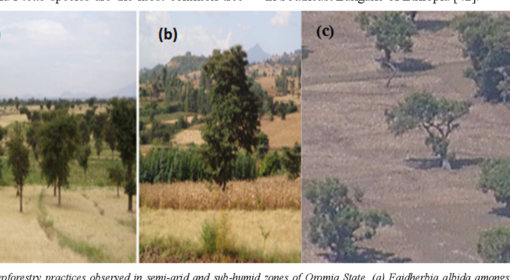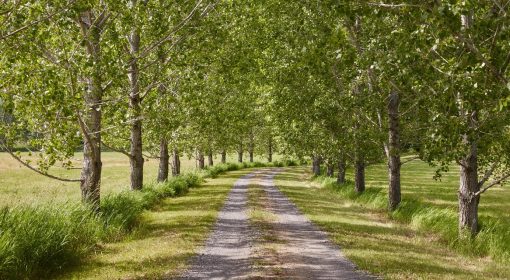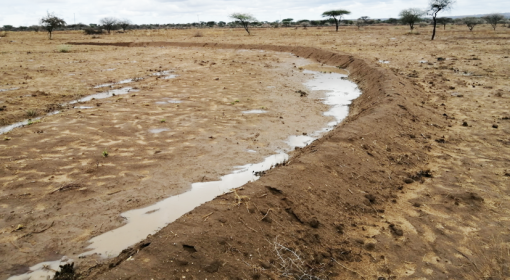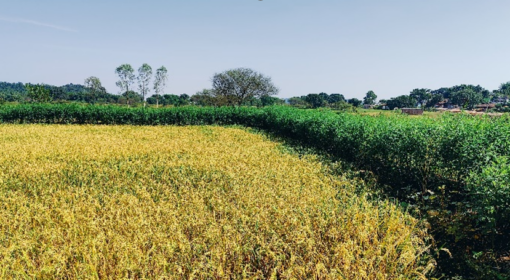By Ashutosh Mishra (PRADAN) Shubham Jain (MetaMeta)
The mention of farm fields often makes one think of the open fields with crops. Primarily all the interventions are crops based; bio-manure applications; NRM (natural resources measures) like field bunds, cropping patterns, and IPM (integrated pest management) methods are some of the popular measures. These all are practices explicitly for fields and only focusing on practices within fields makes the edges, the bunds, partitions and contour lines underutilized spaces with high potential. A traditional agricultural practice is to grow agroforestry trees (For example; Mango, Khamer (Gmelina Arborea), Indian Gooseberry, Guava, Eucalyptus, and more) on the bunds. In the late 1970s, to reduce the pressure on forest resources Government has come up with the concept of Social forestry to utilize the large areas available on bunds, river banks, and canal banks to provide a great scope and opportunity for tree planting and have proven to benefit the farmers in both economic and ecological ways. Some examples of the many benefits[1] that bund spaces have are:
- Compost provision for the field through leaves and twigs from trees.
- Many rural farmers still depend on natural forests as resource pools for their livelihood. Products like Fruits, medicines, fuelwood, teeth-cleaning twigs and fodder can be taken up from the trees surrounding the fields instead.
- Availability of bird shelter; IPM substantiation through insectivorous species, micro compost via droppings that are rich in nitrogen & phosphorus and seeds dispersal agent.
- Shelter for farmers, enabling more trips of farmers to fields and creating better microclimates to work in.
- It enhances soil fertility and water use efficiency within farming systems. Trees increase biomass, and their fallen leaves and twigs, when transformed into humus, can be reused in the main field to increase soil fertility. Certain trees also enrich the nutrient cycle by aiding processes such as nitrogen fixation.
- Trees surrounding the farm plot improve water efficiency by curbing run-off, drainage and soil evaporation[2]. Better management of rainwater, prevention of soil erosion, better flood management and evading dry spells.
- If trees are placed strategically, they can act as a windbreaker and improve the farm microclimate.
- If farmer(s) decides for big canopy trees, it could enable certain shady areas in the field for shade-prone crops like ginger and turmeric.
- Shading can also decrease wasteful evaporation of soil moisture.
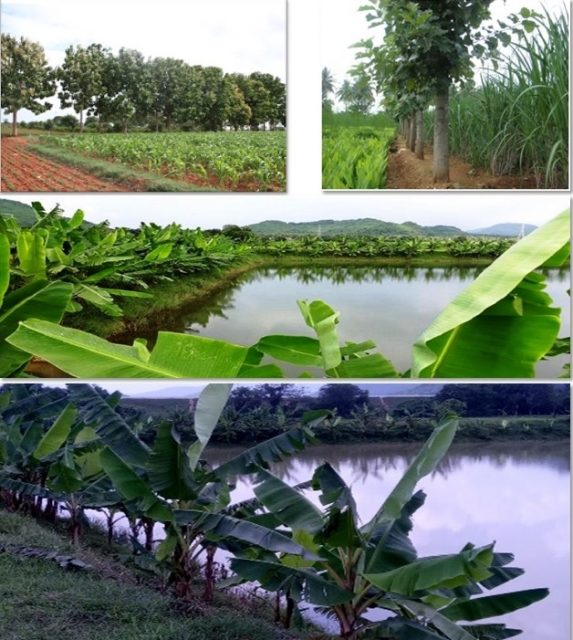
The Mission on Agroforestry under National Mission for Sustainable Agriculture “Har Medh Par Pedh” (Tree on every bund) – tree planting with crops, is gaining importance in recent days. The advantages of integrating trees into agricultural farms have been recognized, and owing to this prospect, bunds and boundary plantations are encouraged under agroforestry practice. Multipurpose tree species with short, medium, and long-term returns can be planted so that farmers may get additional income at regular intervals[3].
A few things that need to take into consideration are: –
- Understanding Limiting Factor – The plant species we are selecting for hedging can adjust in a particular atmospheric condition; we must be aware of the limiting factor of specific plant species; otherwise, it might not be able to sustain for a long time.
- Crop Shading – Some trees and plants have a wider canopy, which might shade the crop and reduce the yields of certain crops. Dependent on the type of crop, a farmer should select the small canopy plant or should sow branches regularly.
- Cost-to-Benefit Analysis- If the plant is causing a specific loss in the yield, then we need to do a cost-to-benefit analysis in terms of pest control, pollination, timber, NTFP, cattle feed, and soil and water conservation measures.
It is therefore suggested to plant small to medium canopy sizes trees on bunds on two sides, north-south sides, to avoid sun blocking the fields. More extensive bunds can be utilized for this. For ease of watering, the bund areas near the home/hamlet can be targeted. Similarly, the pond bunds can be taken up from 2 sides at least. Example of species for boundary bunds are the Leucaena leucocephala (Subabul), the Annona squamosa (Seetaphal), and the Tectona grandis (Teak). Example of Species for internal bunds are the Glyricidia sepium, the Leucaena leucocephala, the Sesbania sesban, the Moringa petrigosperma (Sajna), and the Pongamia pinnata . When the region is prone to grazing, fencing material should be included in the plantation. Appropriate fencing could be a bamboo structure with HDPE, or a nursery green shed cloth wrapping around it.
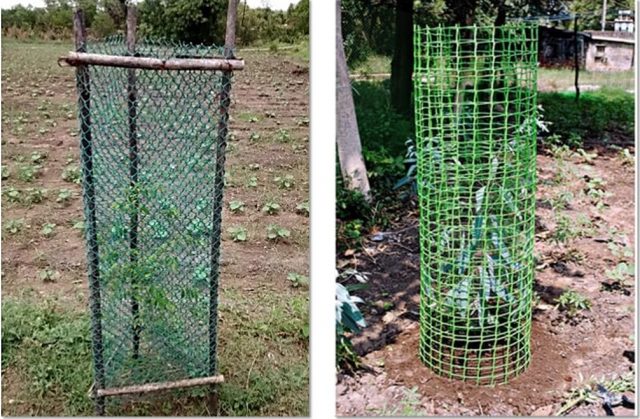
The sapling could come from harvesting perennial seeds from nearby forests, raising them in nurseries, and planting them on bunds after.
Appendix
- https://www.thehindu.com/news/cities/Vijayawada/grow-gliricidia-to-increase-soil-fertility/article7328339.ece
- https://www.smsfoundation.org/news/farm-bunding-enhances-agriculture-income/
- https://www.indiawaterportal.org/articles/tips-using-bunds-cultivated-land
- https://agritech.tnau.ac.in/forestry/agroforestry_index.html
- http://164.100.133.77/Sector_Forest.aspx
[1] https://www.indiawaterportal.org/articles/tips-using-bunds-cultivated-land
[2] https://greenfoundation.in/soil-and-water-conservation/
[3] Bund and Boundary Plantation: A Prominent Feature of Indian Agroforestry [2022] P A, Clara Manasa; Salimath, Supriya K; Hedge, Ramakrishna; Gooli, Manjunath
